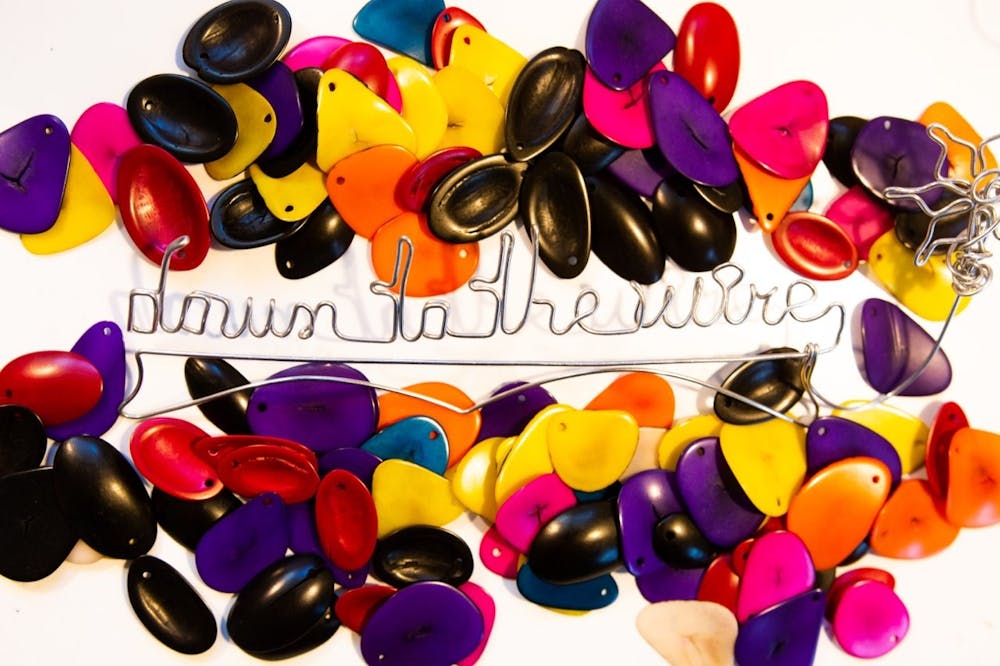With Orange County under a stay-at-home-order, it's difficult to find ways to give back to the community. However, local artist Alessandro Uribe-Rheinbolt is doing just that.
Uribe-Rheinbolt is a senior Carolina Covenant scholar at UNC majoring in anthropology. An international student from Bogotá, Colombia, he makes jewelry from Colombian vegetable ivory and sells it via his Instagram page and website called Down to the Wire. Since the pandemic hit Orange County, Uribe-Rheinbolt is donating all of his profits to employees at Cosmic Cantina.
“They’re great people, and we’ve become really close,” Uribe-Rheinbolt said of Cosmic Cantina employees. “It’s not somewhere you just go and get food, they’re community members as well. I thought it could be a good relief for some of them.”
Uribe-Rheinbolt has been working as a cashier at Cosmic Cantina since November 2019, shortly after he began selling jewelry in September. However, his jewelry-making hobby goes back much further.
“I used to make earrings when I was 10 years old,” Uribe-Rheinbolt said. “I learned how to make them in art class and then my dad would buy me the material made out of seeds. And then I would make earrings and other kinds of jewelry and sell them in my neighborhood or to American tourists that would visit Colombia.”
All of the jewelry is made from tagua, or vegetable ivory, a seed that falls from trees only in Colombia, Peru, Ecuador, Panama and parts of Brazil. It’s called vegetable ivory due to its similarity with real ivory, as it’s hard and a shiny white. Uribe-Rheinbolt works with an artisan shop in Bogotá who sends him processed and dyed seeds.
“I come up with different designs, so I get different shapes of seeds and different cuts of them,” Uribe-Rheinbolt said. “And then I design earrings with wire, or I do some things with very simple earrings, like a simple arrangement, to much more complex designs with earrings and necklaces.”
Culture is a big emphasis in Uribe-Rheinbolt’s art.
“I think there definitely has to be a connection between culture and art,” Uribe-Rheinbolt said. “When I go home, I walk around the streets of my city, and I see these earrings everywhere. I think I have grown a deeper connection to my heritage and understanding the significance of one’s cultural expression, and being a carrier of culture from an anthropological point of view and seeing what that entails.”




